Throwback Thursday: Past the Fingers of God
The Universe we see isn’t exactly the Universe that is. How do we translate?
“On a cosmic scale, our life is insignificant, yet this brief period when we appear in the world is the time in which all meaningful questions arise.”
–Paul Ricoeur
Ask anyone who’s looked up at a dark sky on a clear, moonless night, and you’ll immediately hear tales about how incomprehensibly vast the Universe is. As thousands of stars, each with their own cosmic story, loom overhead, along with the vast expanse of the Milky Way, it’s easy to feel overwhelmed.
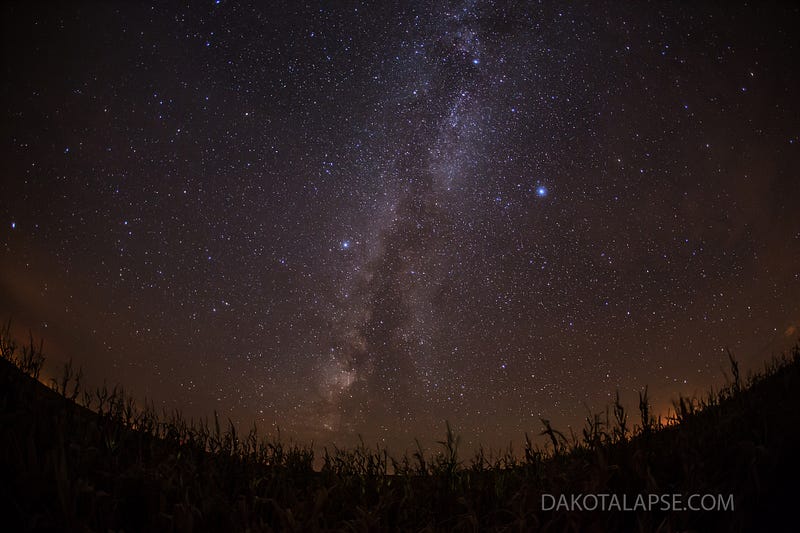
But what you’re looking at isn’t all that much of the Universe in the least. In fact, practically every point of light you see, including the vast swaths of stars too dim to individually resolve, come from within our own Milky Way galaxy, or very close to it. As we know from generations of telescopes, observatories, observations, as well as physicists and astronomers, the Universe extends far beyond that.
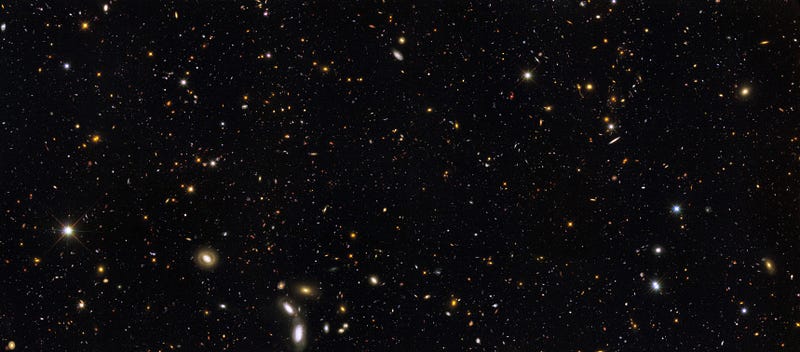
There are hundreds of billions of galaxies (at least) out there in our observable Universe, spread out, from our vantage point, over a sphere some 46 billion light-years in radius.
If we were to look at it, as human beings, we’d be limited by the biology of our eyes. Very well adapted for seeing in well-illuminated conditions, we’d do somewhat less well in intergalactic space; we’d only be able to see the closest and brightest of all light sources, which would most likely limit us to only a few dozen galaxies, tops, if we were plunked down in a random location.

As it is, we’re within our own galaxy, and so have thousands upon thousands of foreground stars that we have to ignore when we look deep into the Universe. We also are familiar with using tools like telescopes and/or cameras — one or both of which is required to see even nearby, bright galaxies like Messier 109, above — to help enhance our understanding of what’s out there.
No wonder so many of us have dreams of voyaging across the Universe, seeing what lies beyond our local realm. How grand it would be to view all the galaxies and how they clump and cluster together, of the different forms they take, and of what such a fly-through, would look like.
What an adventure it would be.
As fantastic as the video above is, it only consists of some 400,000 galaxies, occupying a relatively paltry fraction of our observable Universe’s volume: around 0.0001% of what’s accessible to us.
Can’t we do better than that?

Recently, the Cosmic Flows Project has put together a stunning video (narrated with a heavy French accent) that’s a 17-minute tour through the local Universe within 300,000,000 light-years. It’s a remarkable look at not only our Milky Way, our local group, and our nearest supercluster (the Virgo supercluster, of which we’re on the outskirts, and which contains about 100,000 galaxies), but beyond even this, to the largest superclusters and voids found nearby!
When you’ve got the time, you’ll definitely want to watch the whole thing.
But you might look at this and wonder just how we figure this out: how do we know what the Universe truly looks like? From our vantage point here on Earth — or even in space from someplace within our Solar System — there’s a lot of information to filter through and figure out.
The simplest thing you can do actually gets you very far: remember Hubble’s Law, or the fact that not only is the Universe expanding, but the distance a galaxy is from us is directly proportional to its recession speed.
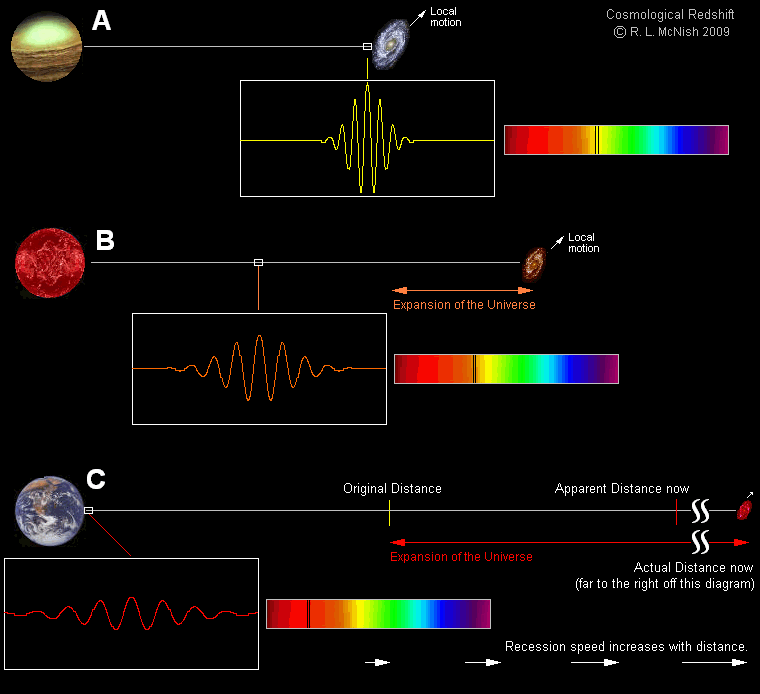
It turns out that redshift is actually a somewhat easy property of a galaxy to measure, so if you know Hubble’s law, you can infer how far away that galaxy is.
Well, kind of. Hubble’s Law gives a very good approximation for distances on average, particularly on large scales. But Hubble’s law doesn’t account for all of an object’s redshift. There’s also the very minor issue (that’s sarcasm) of all the other matter in the Universe, and the gravitational effects it’s had on each and every galaxy it’s had time to interact with over the past 13.8 billion years.
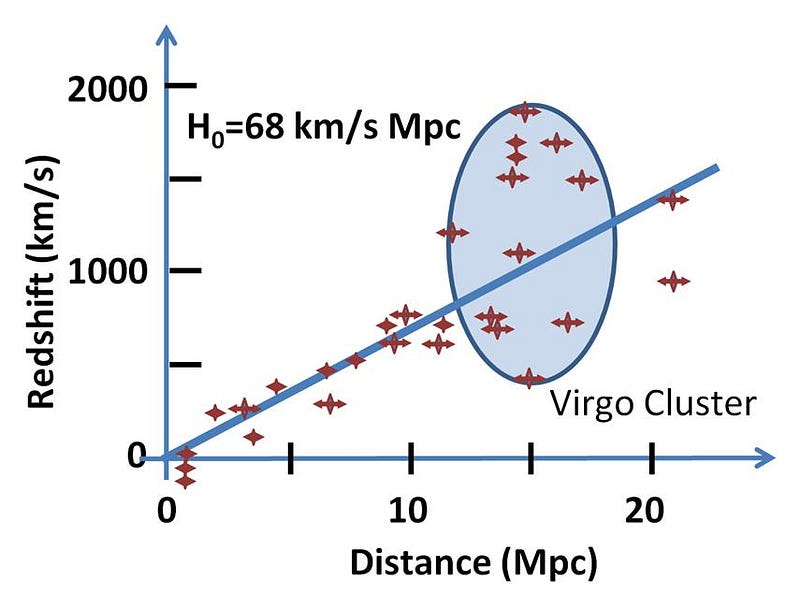
Matter has this annoying property that it clumps and clusters together, and that’s because gravitational attraction causes it to move. Don’t get me wrong, this is great for lots of things, but it’s not great when you’re trying to figure out how distant an object truly is when all you measure is its motion!
What’s the impact of gravitation? It creates distortions along the line-of-sight, known as redshift-space distortions.

As you can see, on the left, these distortions create apparent lines or streaks that point radially towards you. We call these features Fingers of God. These effects happen because galaxies that are clustered together move more rapidly, both towards and away from the center of the cluster, which spreads them out in redshift.
There’s also a less noticeable effect, where clusters move relative to one another and fall into superclusters and filaments; these actually have the reverse effect on larger scales, creating flatter features on very large scales. There are some who call this the Kaiser effect (after Nick Kaiser), but I’ve always called them Pancakes of God.
Because, you know, when it comes to God, I imagine fingers and pancakes go together.

So, how do we overcome these redshift space distortions? Believe it or not, this is one of the times where simulations have helped us tremendously! Thanks to the way that structure forms over the history of the Universe, from its gravitational evolution, we can figure out exactly how, on all distance scales, clustered objects translate from redshift space, which is easy to measure, into real space, which is the Universe we actually live in.
In other words, simulations tell us how to undo the fake effects that these artificial “fingers-and-pancakes” introduce, bringing us back to the Universe as it actually is.
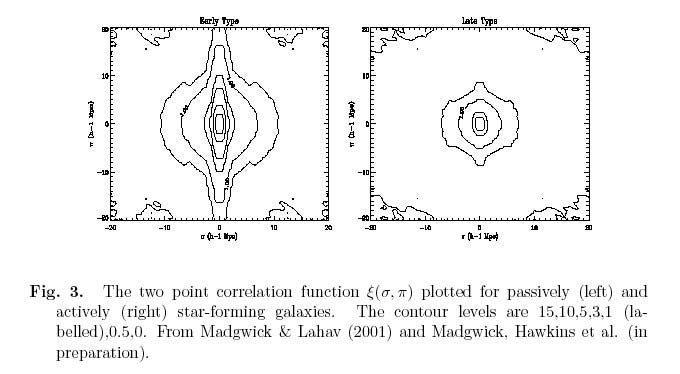
At this point, we understand clustering in our Universe — as well as the dark matter and dark energy that it’s dependent on — to make this transformation with incredibly high degrees of confidence. So sure, we start in the same place: we measure the redshift of galaxies and plot them out accordingly.
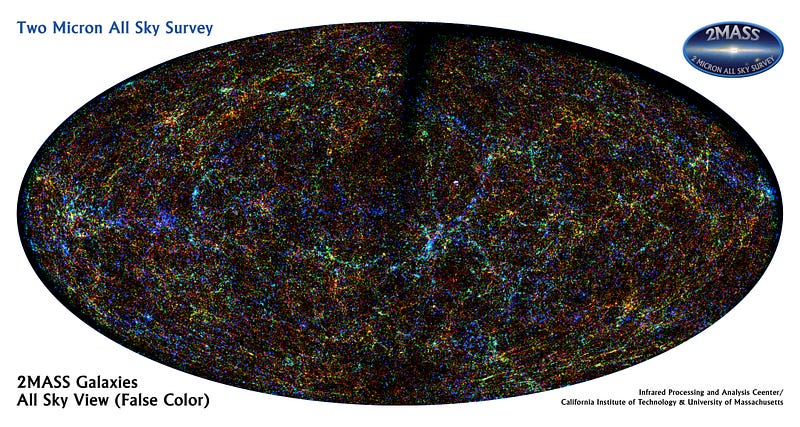
But then we use all the things we know about mass and matter and gravity to understand how these galaxies have clustered together, and to map out — to the best of our abilities — their peculiar velocities, or their velocity with respect to the Hubble flow. By subtracting those peculiar velocities out, we can get estimates for their real-space positions, and hence, for how far away in each direction each galaxy is.
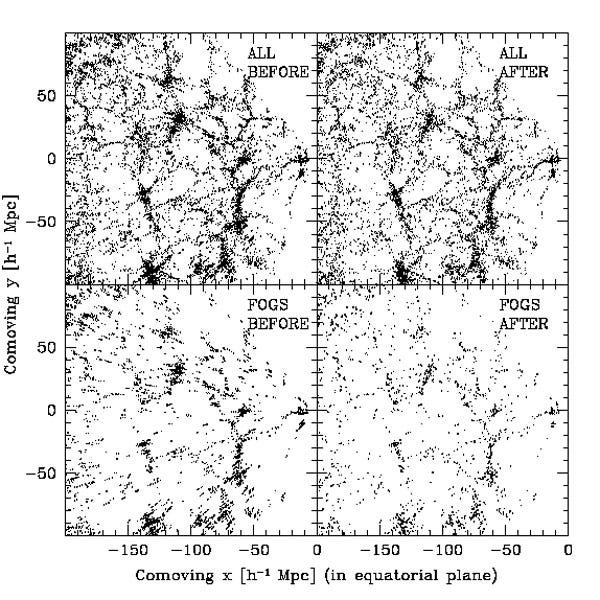
The “finger” effects (and pancake effects) are not real; when we account for the gravitational attraction of the objects in the Universe, we find that the real, observable Universe agrees exactly with what our simulations predict.
The cosmic web — the structure that galaxies, groups, clusters and filaments form on the largest of all scales — is real, and it’s spectacular.
And that’s why the Universe looks like, beyond the Fingers of God!
Leave your comments at the Starts With A Bang forum on Scienceblogs.





